2-aminofluorene
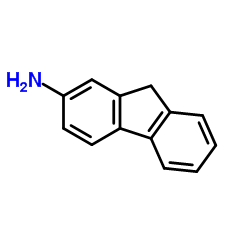
2-aminofluorene structure
|
Common Name | 2-aminofluorene | ||
|---|---|---|---|---|
| CAS Number | 153-78-6 | Molecular Weight | 181.233 | |
| Density | 1.2±0.1 g/cm3 | Boiling Point | 379.3±21.0 °C at 760 mmHg | |
| Molecular Formula | C13H11N | Melting Point | 124-128 °C(lit.) | |
| MSDS | USA | Flash Point | 204.8±17.4 °C | |
Use of 2-aminofluorene2-Aminofluorene is a synthetic chemical insecticide. 2-Aminofluorene is a genotoxin. 2-Aminofluorene can be used in the research of DNA adduct structure, DNA repair, carcinogenesis, and mutagenesis[1][4]. |
| Name | 2-Aminofluorene |
|---|---|
| Synonym | More Synonyms |
| Description | 2-Aminofluorene is a synthetic chemical insecticide. 2-Aminofluorene is a genotoxin. 2-Aminofluorene can be used in the research of DNA adduct structure, DNA repair, carcinogenesis, and mutagenesis[1][4]. |
|---|---|
| Related Catalog | |
| In Vitro | 2-Aminofluorene (0-100 μM, 1-5 days) produces a dose-related suppression of the antibody response to sheep erythrocytes (SRBC), DNP-Ficoll, and LPS[2]. 2-Aminofluorene (0-100 μM, 3 days, spleen cells) produces suppression on lymphoproliferative responses to LPS and Con A[2]. |
| In Vivo | 2-Aminofluorene (60 mg/kg, i.p.) accumulates twice the 2-Aminofluorene-DNA adducts of slow acetylators (A/J) in rapid acetylator mice (C57BL/6J)[3]. 2-Aminofluorene (60 mg/kg, i.p.) forms significantly higher levels of DNA adducts in tumor-target organs than in non-target organs in acetylator congenic hamsters[4]. |
| References |
| Density | 1.2±0.1 g/cm3 |
|---|---|
| Boiling Point | 379.3±21.0 °C at 760 mmHg |
| Melting Point | 124-128 °C(lit.) |
| Molecular Formula | C13H11N |
| Molecular Weight | 181.233 |
| Flash Point | 204.8±17.4 °C |
| Exact Mass | 181.089142 |
| PSA | 26.02000 |
| LogP | 2.88 |
| Vapour Pressure | 0.0±0.9 mmHg at 25°C |
| Index of Refraction | 1.697 |
| Water Solubility | <0.1 g/100 mL at 19.5 ºC |
CHEMICAL IDENTIFICATION
HEALTH HAZARD DATAACUTE TOXICITY DATA
MUTATION DATA
|
| Personal Protective Equipment | Eyeshields;Gloves;type N95 (US);type P1 (EN143) respirator filter |
|---|---|
| Hazard Codes | Xn:Harmful; |
| Risk Phrases | R40;R68 |
| Safety Phrases | S45-S36/37 |
| RIDADR | NONH for all modes of transport |
| WGK Germany | 3 |
| RTECS | LL5075000 |
| Packaging Group | I; II; III |
| Hazard Class | 6.1 |
| HS Code | 29214980 |
| Precursor 10 | |
|---|---|
| DownStream 10 | |
| HS Code | 29214980 |
|---|
|
Safety and mutagenicity evaluation of Vigiis 101 powder made from Lactobacillus paracasei subsp. paracasei NTU 101.
Regul Toxicol Pharmacol 71(2) , 148-57, (2015) The aim of the present work was to assess the genotoxic activity and the potential for toxicity upon repeated dosing of "Vigiis 101" powder, a probiotic consisting of dried bacteria Lactobacillus para... |
|
|
Safety assessment of dietary bamboo charcoal powder: a 90-day subchronic oral toxicity and mutagenicity studies.
Food Chem. Toxicol. 75 , 50-7, (2015) Vegetable carbon has been used as food additive in EU (E153) and China for many years; however, no experimental data have been available on its dietary safety. This study was designed to evaluate the ... |
|
|
Phytotoxicity and genotoxicity assessment of imazethapyr herbicide using a battery of bioassays.
Environ. Sci. Pollut. Res. Int. 22 , 19194-202, (2015) The imazethapyr herbicide (formulation Verosil(®)) was evaluated for phytotoxicity and genotoxicity using a battery of bioassays: (1) the growth inhibition of the green alga Pseudokirchneriella subcap... |
| 9H-Fluoren-2-amine |
| EINECS 205-817-8 |
| 2-aminofluorene |
| 2-Amino fluorene |
| 9H-Fluoren-2-ylamine |
| MFCD00001125 |
| 2-Fluorenamine |
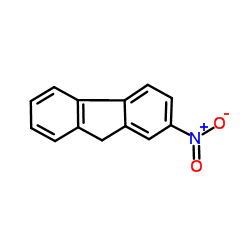 CAS#:607-57-8
CAS#:607-57-8 CAS#:24237-69-2
CAS#:24237-69-2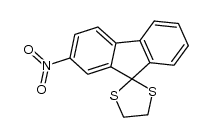 CAS#:102203-62-3
CAS#:102203-62-3 CAS#:1133-80-8
CAS#:1133-80-8 CAS#:3096-57-9
CAS#:3096-57-9 CAS#:52086-09-6
CAS#:52086-09-6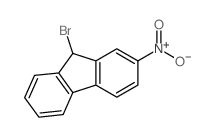 CAS#:53172-79-5
CAS#:53172-79-5 CAS#:53-96-3
CAS#:53-96-3 CAS#:7647-01-0
CAS#:7647-01-0 CAS#:15961-88-3
CAS#:15961-88-3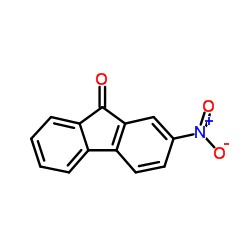 CAS#:3096-52-4
CAS#:3096-52-4![4-[[9-(hydroxymethyl)-9H-fluoren-2-yl]amino]-4-oxobutanoic acid structure](https://image.chemsrc.com/caspic/494/141340-60-5.png) CAS#:141340-60-5
CAS#:141340-60-5![9H-Fluoren-2-amine,N-[(4-nitrophenyl)methylene]- structure](https://image.chemsrc.com/caspic/133/23072-71-1.png) CAS#:23072-71-1
CAS#:23072-71-1 CAS#:1914-43-8
CAS#:1914-43-8 CAS#:21865-57-6
CAS#:21865-57-6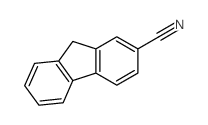 CAS#:2523-48-0
CAS#:2523-48-0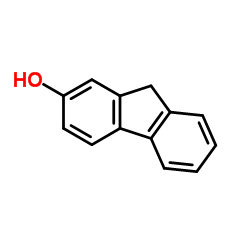 CAS#:2443-58-5
CAS#:2443-58-5
